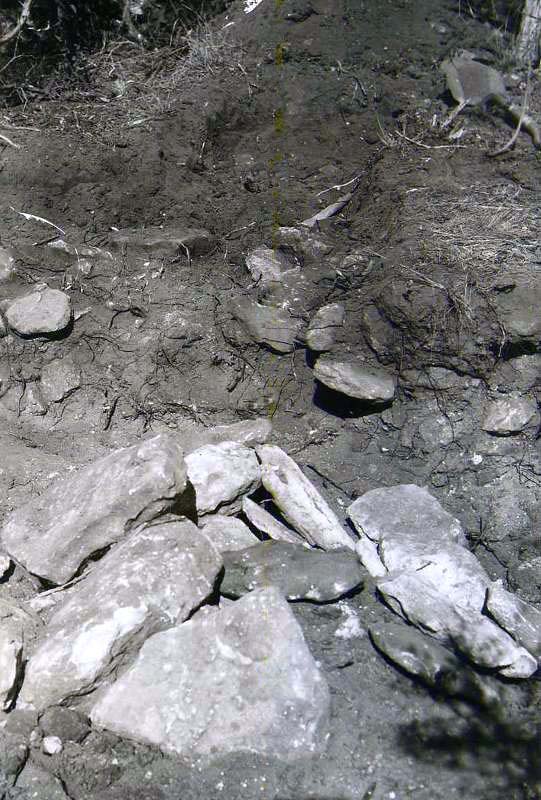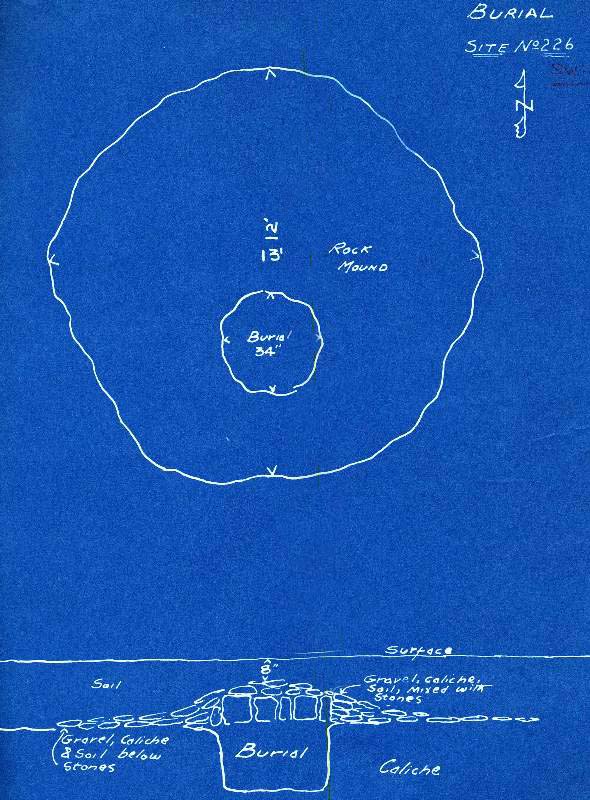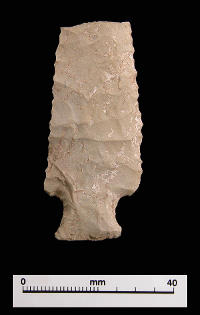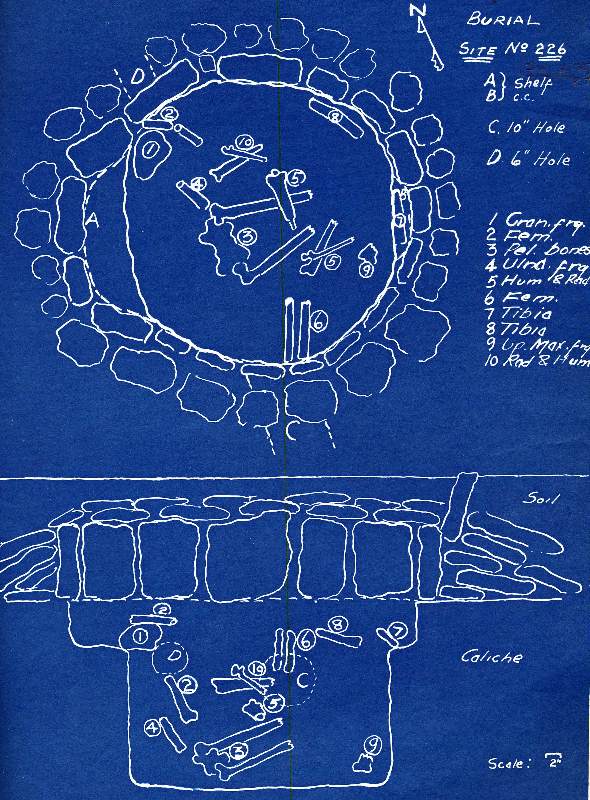
Rock mound covering the burial at 41TA32. Photo by E. B. Sayles, "Texas Burial Customs" Plate XVIII. Unpublished ms. on file in TARL Archives. |

Location of burial within mound, shown in plan and section view. Graphics by E. B. Sayles. TARL Archives. |
|
Site 41TA32 is a rock cairn burial on top of a small knoll rising about a hundred feet above the surrounding plain in the western part of Taylor County. The cairn structure was large and complex and was well documented graphically by excavator E. B. Sayles. The remains of one or two individuals were buried within.
At the time of excavation, the top of the cairn lay about 8 inches below ground surface and rocks extended roughly 12 feet N-S and 13 feet E-W. Beneath the south central portion of the cairn was a burial pit roughly 3 feet in diameter and 2 feet deep. According to Sayles, the burial pit had been dug into a caliche layer, probably by enlarging existing animal dens (note dotted circles labeled C and D in profile graphic shown at bottom right).
Internally, the cairn was complex. Large slabs, arranged vertically, had been used to partially line the space for the burial. Over these, a large mounded rock covering had been built, with stones of varying sizes laid horizontally. One slab, standing vertically on edge amid the horizontal stones, appeared almost as if intended to be a grave marker (see profile graphic).
The burial pit contained the badly disintegrated and partially burned bones of one or two individuals. Some of the elements were in anatomical position, but most were scattered. Because of their poor condition, it could not be determined if all the bones were present. The cremation presumably occurred elsewhere although the pit fill was described as ashy gray and very powdery. Some rodent disturbance in the fill also had occurred.
A small chipped-stone projectile point and other chipped stone items apparently were found within the fill of the burial pit, although Sayles' notes are unclear. The small point is similar to type Darl, a transitional Archaic type found throughout much of Texas. Whether the dart point was collected and used as a grave offering by Late Prehistoric peoples, or represented a weapon of the times (and potential instrument of death), is unknown.
|

Small point and bifaces found at the grave. The point resembles the Transitional Archaic Darl type, which some researchers have suggested may have been used to tip arrows rather than darts. Photo by Laura Nightengale, TARL Collections. |

Plan and section of cairn following excavation. Note vertical stone on right, perhaps a marker, extending above the flat stones covering the mound. Graphics by E. B. Sayles. TARL Archives. |
|